Description
Metropolitan Museum Hieroglyphics Ball Pen. It was a form of writing known as “the speech of the gods,” often used for religious inscriptions and called hieroglyphs, or holy carvings. The Egyptians also used this script for more than three millennia, through the end of the third century A.D. For the most part it was the province of priests, as only the educated could read and write hieroglyphs.
Metropolitan Museum Hieroglyphics Ball Pen
This most ancient form of written communication often used pictures to “spell” words. A wavy line meant water. Other times two or more unrelated pictures joined to create a concept. An English-language equivalent would be to put together the pictures of a bee and a leaf to convey “belief.”
The pen, with its four-sided tapered barrel, suggests the shape of the obelisk. The stone monument on which the Egyptians carved many hieroglyphs. But these hieroglyphs take their source from a different stone design—a false door belonging to Metjetji, a noble man who lived during the reign of King Unis (ca. 2353-2323 B.C.). The glyphs are also part of a traditional offering inscription and depict, among other images, a snake, a jackal, several birds, and the wavy line meaning water.
From words carved in stone to words penned on paper—these hieroglyphs serve to remind us of how old is the urge to write.The highlight of the pen is the smooth writing roller ball refills. Brass base metal body with gold plate accents. Handsomely packaged in a wooden gift box. In addition, the pen uses a smooth writing Waterford ball pen refill. A refill comes also included in the box with the pen. The pen comes with a twist out twist in mechanism. Buy this Ball Pen and we bet you. that every time that you get it out, somebody will ask , where did you buy it?










Reviews
There are no reviews yet.